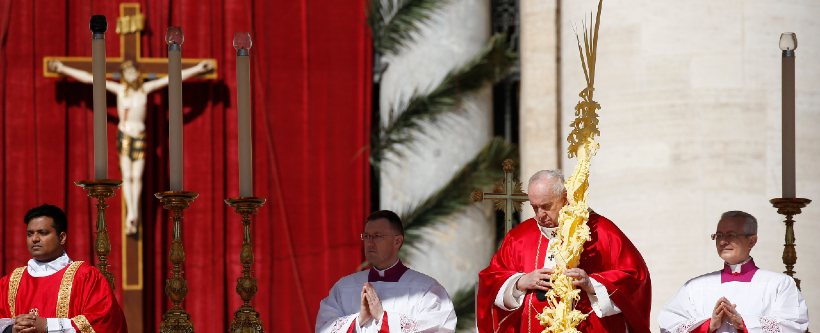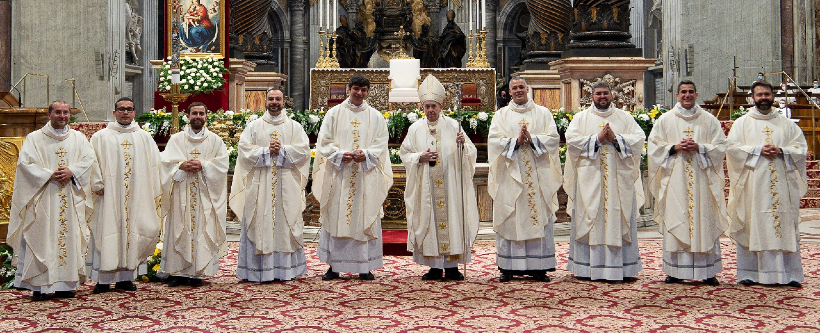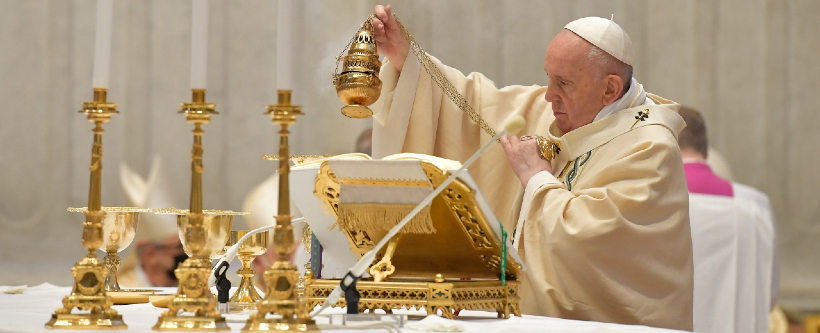
“It seems that the protagonist of today’s readings is the serpent, and there is a message here”, Pope Francis immediately pointed out. Yes, “there is a profound prophecy in this presentation of the serpent”, which, he explained, “was the first animal to be presented to man, the first of which the Bible mentions” and defines as the smartest of the wild animals God created. The Pope said that “the serpent’s figure is not beautiful, it always arouses fear”. Even if “the snake’s skin is beautiful, the fact remains that the snake’s behavior is scary.”
The Pope said that the book of Genesis “describes the serpent as ‘the most cunning’”, but also that “he is a charmer that has the ability to fascinate, to charm you.” Even more “he is a liar, he is jealous; it is because of the devil’s envy – the serpent’s envy – that sin entered into the world.” He has “this ability to ruin us with seduction: he promises you many things, but when the time comes to pay you he pays badly, he is an evil payer.” However, the Pontiff remarked, the serpent “has this ability to seduce and to charm.” Paul, for example, “was angry with the Christians in Galatia who gave him much to do,” and he said to them, “O foolish Galatians, who has bewitched you? You who were called to freedom, who has bewitched you?”. It was the serpent himself who corrupted them “and this was nothing new: the people of Israel were conscious of it.”
Referring to today’s first reading from the book of Numbers (21:4-9), Francis said that “to save them from the serpent’s venom, the Lord told Moses to make a bronze serpent, and that whoever looked at that serpent would be saved.” The Pope went on to say that “this is an illustration, a prophecy, and a promise. It is a promise that is not easy to understand.” Today’s Gospel (John 3:13-17) tells us that “Jesus himself explained Moses’ act a bit further to Nicodemus”: that just as he had “lifted up the serpent in the wilderness, so must the Son of Man be lifted up, that whoever believes in him may have eternal life.” The Pope said that “the bronze serpent was a figure of Jesus raised up on the Cross.”
For what reason, Pope Francis asked, would “the Lord choose this bad, ugly figure?”. He responded that it was simply “because Jesus came to take all our sins upon himself”, becoming “the greatest sinner without having ever committed a sin.” This is why Paul tells us that Jesus became sin for us. Using this figure, then, Christ became a serpent. “It’s an ugly figure!” the Pontiff said, but He really did “become sin to save us. This is the message in today’s liturgy.” This is precisely “Jesus’ path: God became man and bore his sin.”
In the second reading from the Letter to the Philippians (2:6-11), Paul explains this mystery, and the Pope noted that he did so out of love: “Though he was in the form of God, Jesus did not count equality with God a thing to be grasped, but emptied himself, taking the form of a servant, being born in the likeness of men; And being found in human form he humbled himself and became obedient to death, even death on a cross.” Pope Francis repeated that Jesus “emptied himself: He became sin for us, he who knew no sin.” This, therefore, “is the mystery”, and “we can say that he became like a serpent, so to speak, which is ugly and disgusting.”
There are many beautiful paintings, the Pope said, which may help us to contemplate “Jesus on the cross. But the reality of it was very different: he was all torn and bloodied by our sins.” Moreover, “this is the way that he has taken in order to defeat the serpent in his field.” Therefore, the Pope said, we ought to always “look at Jesus’ cross, not those well-painted artistic crosses”, but instead at the “reality of what the cross was at that time.” The Pope said to “look at his path,” recalling that he “emptied himself and lowered himself in order to save us.”
“This is also the Christian’s path”, the Pope added. Indeed, “if a Christian wants to make progress on the path of the Christian life, he must lower himself, as Jesus lowered himself: this is the path of humility”, which means “bringing humiliations upon yourself, as Jesus did.” The Pope said that this is precisely the message given to us in “today’s liturgy on this feast of the Exaltation of the Holy Cross”. He concluded by saying that the Lord “gives us the grace that we ask of Our Lady who was under the Cross: the grace to cry, to cry out of love, to cry out of gratitude, because our God loved us so much that He sent His Son to lower himself and allow himself to be crushed in order to save us.”






Facebook Comments